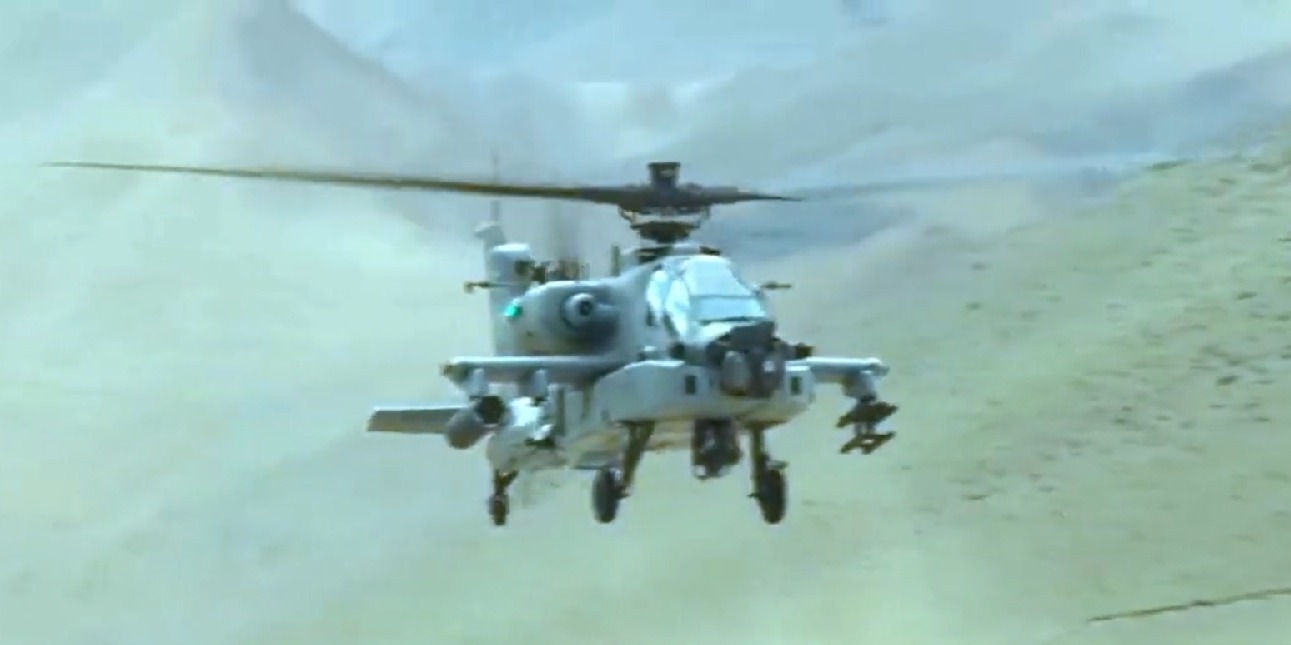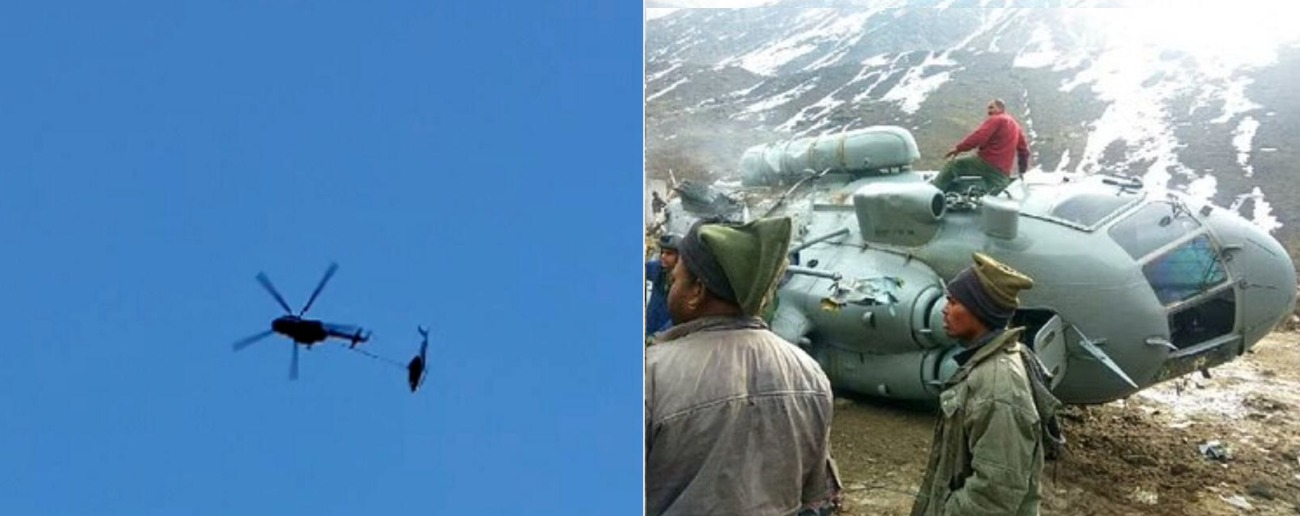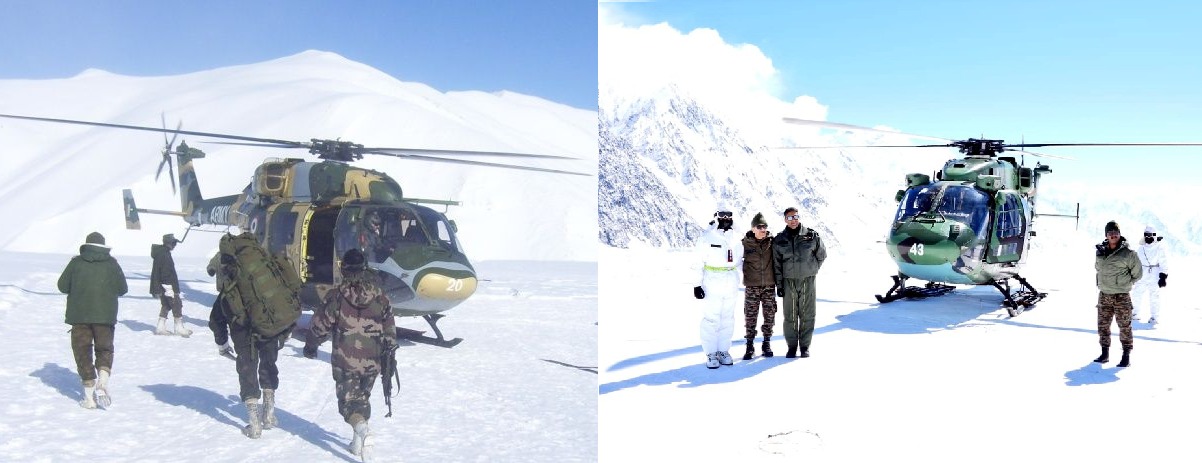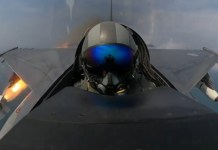A defective private helicopter crashed on August 31 while it was being airlifted by the Indian Air Force’s Soviet-vintage Mi-17 helicopter. The private chopper was stranded at Uttarakhand’s Kedarnath at 11,755 feet. The incident underscores the perils of recovering Boeing’s Apache AH-64 heavy attack helicopter stuck at high altitude Ladakh region along the China border following a ‘technical malfunction.’
The private helicopter made an emergency landing near the Kedarnath helipad in May after some technical faults. It was ferrying passengers to the Himalayan temple.
The Mi-17 was roped in to airlift the private helicopter. However, shortly after takeoff, the IAF helicopter started losing balance due to the “weight of the helicopter and wind.” The pilot decided to drop the private helicopter near the vacant spot near the Mandakini River in Lincholi.
The crashed helicopter did not contain passengers or luggage. During the Char Dham yatra (four temple pilgrimages), choppers make an average of 400 sorties daily in the Kedarnath area.
In October 2019, another Mi-17V5 successfully evacuated a crashed helicopter from UT Air Pvt. Limited at 11,500 feet at Kedarnath helipad. The helicopter was flown to Sahastradhara near Dehradun.
In October 2022, a chopper crashed in Kedarnath, killing all six devotees and a pilot on board. In April 2023, a senior official of the Uttarakhand Civil Aviation Development Authority (UCADA) was killed after being hit by the tail rotor of a helicopter in Kedarnath.
A helicopter has crashed while attempting to land at Kedarnath in Uttarakhand. The incident occurred on Saturday morning, and a video of the crash has emerged. While detailed information about the crash is yet to be released, rescue operations are currently underway at the scene.… pic.twitter.com/pSAUK1Hlyb
— Pune Mirror (@ThePuneMirror) August 31, 2024
High-Altitude Helicopter Flying
The high altitude affects helicopters’ engine performance and load-carrying capacity. Due to the rarefied atmosphere, the aircraft’s controls also become sluggish at high altitudes. Flying at the limits of the aircraft requires meticulous calculation of the ‘All-up weight’ of the aircraft. A few extra kilograms of cargo could have lethal consequences.
As reported by the EurAsian Times earlier, on April 4, an IAF Apache was stranded in Ladakh after it reportedly experienced a ‘loss of power’ during an operational training sortie.
Owing to its high altitude, recovering the helicopter is proving to be an arduous task. The IAF is said to be in touch with the Original Equipment Manufacturer (OEM).
The Apache’s emergency landing spot is situated at about 12,000 feet near Khardung La, one of the highest passes in the area at 18,380 feet. Helicopters traveling towards Siachen Glacier, touted as the highest battleground in the world, have to traverse the Khardung La Pass.
The Russian Mi-26 super heavy-lift helicopter, which can carry more cargo than any Western helicopter, has been grounded. The American Chinook heavy-lift helicopter can ‘under-slung’ the Apache and fly it back to the base. However, the rarefied atmosphere and high altitude can complicate the operations.

“Engine performance and hence load carrying capacity (of helicopters or aircraft) reduces drastically,” an IAF officer, who has experience operating in high altitude regions, told the EurAsian Times.
“You need a very large area to underslung the item as controls become sluggish due to rarer air. The helicopter’s inertia sets longer, and to stop aircraft, you need a large area. Our helipad dimensions progressively increase with the increase in altitude to cater for less power available and control response,” he said while explaining the things the helicopter pilots have to keep in mind while operating the region.
Daring Ops At 19,500 Feet
In 2019, an Indian Army’s Advanced Light Helicopter ‘Dhruv’ got stuck at the Siachen Glacier when it overturned at 18,000 feet following a snowfall. Surrounded by harsh icy terrain and freezing winds, the Indian Army managed to overturn the helicopter onto its side.
The technicians and pilots of the Army ALH Squadron 203 in Leh managed to put new parts on the chopper and bring it back safely to the Siachen Glacier base camp after months.
IAF also recovered Chopper stranded on a matchbox helipad in Siachen Glacier at 19,500 feet.
In 1990, when the booming artillery was adding to the hostile weather at the Siachen Glacier, an IAF helicopter suffered an engine malfunction while landing on the helipad at the Amar Base perched at 19,500 feet amidst freezing snow. The crew was immediately airlifted by the ‘buddy helicopter’ as they could not spend the night at the height without acclimatization.
The evacuation of the crew was done amidst Pakistani shelling, and a damaged Cheetah helicopter was left there. It was a task to replace the 18-kg engine of the Cheetah helicopter with another one at that height.

The Indian Army’s troops accomplished this by replacing the engine, which generally required a portable crane to lift it out and replace it with another. Another problem was that the Cheetah coming in with the engine could carry up to 75 kg of weight because of the low air density.
In 1990, technicians had never replaced a helicopter engine at an altitude of 19,500 feet anywhere in the history of aviation.
A Sikh Light Infantry unit posted at the Amar post, just two kilometers from a Pakistani post, first lifted the stranded Cheetah helicopter away from the helipad to make way for the incoming rescue helicopter. After that, they constructed a ‘snow wall’ to shield what was going on at the base from the prying eyes of the Pakistani troops.

“There was no time to lose, so in the subsequent days, a technical team of IAF airmen under Flt Lt Gen Sreepal was dropped off by a helicopter at a post at 15,000 feet for a shortened acclimatization period. Some aviation fuel was pre-positioned in 20-liter jerry cans at Amar, while in the helicopter carrying the replacement engine, it was planned to be kept at the bare minimum to reach there. Wing Commander Mahendra Goli, the Commanding Officer, flew the mission after a week (around 10 June) to transport the engine. To carry the 182 kg engine, the Cheetah was made light by removing its tail rotor guard, rear seats, side panels, doors and after the aircraft was started up – the battery itself,” Air Vice Marshal Manmohan Bahadur (Retd) wrote later about the incident.
Not just the pilots but the technical staff have also been doing an incredible job of keeping the machines fly-worthy. They work in sub-zero temperatures, where the skin gets peeled off when it comes in contact with any metallic part.
Chetak, unlike its lighter variant Cheetah, was an underpowered machine and was not designed to fly at those altitudes. The pilots would fly the helicopters while hugging the hills and using the updraft (the wind rising along the mountain cliffs) to power the engine.
The helicopters will fly just 20 feet away from the hills at 35 knots of speed. The crevassed topography offers few landing spots. Certain weather conditions would create a ‘whiteout’ that can disorient the pilot. A sunny day means that the glare from the snow can cause snow blindness.
Between 1985- 2003, the Siachen Glacier was an active warzone with Pakistani artillery fire constantly targeting Indian positions. This, coupled with harsh weather, would make the flying conditions arduous for the pilots.
The pilots would land on makeshift helipads, and loading and unloading would be done as quickly as possible. The author had the opportunity to trek to Camp II of the Siachen Glacier and experience the daring missions flown by these pilots herself.
The pilots would often land at matchbox-size helipads with only an inch of space left after landing. Some of the helipads were made with frozen chocolates covered in tarpaulin.




